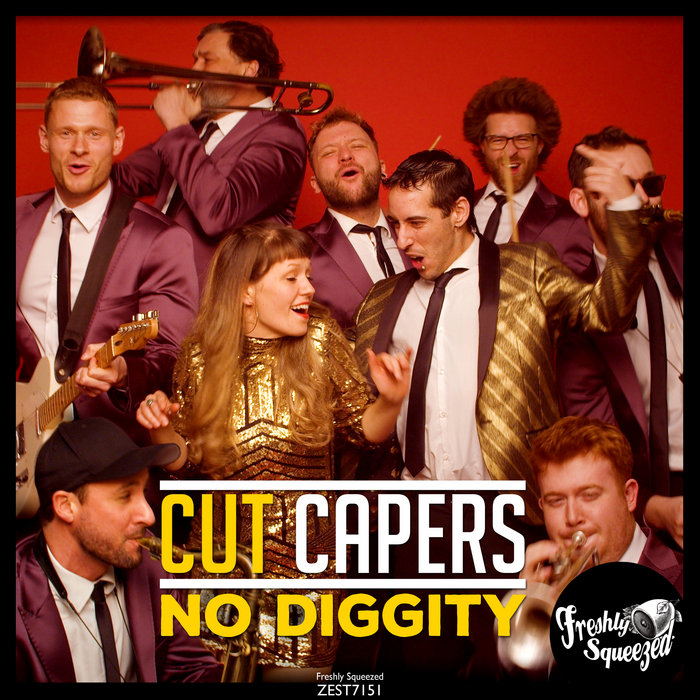
No Diggity – Cut Capers
this blog is GROOVY – check out great Soul, Funk, Jazz, Hip Hop, Bass, Breaks , Reggae, House n many more TUNES
Hey there, funky humans! Today we’re diving into the vibrant and whimsical world of cut capers—a music genre that’s all about good vibes, spontaneity, and a dash of cheekiness. Grab your dancing shoes and let’s boogie through its history!
Cut capers ain’t your everyday melody; they’re the jazzy offspring of various genres, merging elements from jazz, funk, hip-hop, and a sprinkle of street art culture. These musical capers are all about creativity—improvisation reigns supreme here! Picture a jam session with a group of friends where you just go wild with rhythms and beats until it becomes an unexpected masterpiece.
The roots of cut capers can be traced back to vibrant cities like New Orleans and New York during the late 1960s. You had musicians bouncing off each other’s energy in clubs—improvising solos on top of groovy basslines while patrons swayed along. It was as if everyone decided to put their differences aside for one magical night under flashing disco lights.
Did you know that some famous jazz musicians would play entire sets wearing outrageous costumes? One legendary saxophonist once wore a giant chicken suit just to make his bandmates laugh! Nothing says “serious musician” quite like feathers flying while hitting those high notes!
As time grooved along into the ’70s and ’80s, cut capers began bubbling up from underground scenes across America. DJs started spinning records at block parties creating what we now recognize as hip-hop culture. They mixed segments from previous tracks (cutting them) to craft new songs—a perfect fit for our beloved cut caper aesthetic!
During this era, those who embraced funk moved towards sampling sounds—from classic soul records to psychedelic rock tunes. With instruments aplenty strumming away alongside drum machines twinkling in harmony—it became clear that fun was spilling everywhere.
One pioneer DJ famously used a broken turntable as his main mixing tool—and he rocked it so hard that people thought it was part of his act! He simply called himself “The Turntable Tinkerer,” proving you don’t need fancy gear when you got talent (and humor) on deck.
Fast forward to today; several iconic figures have helped shape cut capers into what we know today:
Herbie Hancock: This guy knows no bounds! He melded jazz with electronic music way before most folks could even spell “MIDI.” His tune “Chameleon” is practically the anthem for any self-respecting cut-capering party.
DJ Shadow: Known for creating jaw-dropping collages made purely by sampling existing tracks rather than traditional playing techniques—he made heads bop globally with “Endtroducing…..”
A Tribe Called Quest: They blended laid-back jazzy instrumentals with clever lyrics—a true masterclass in balancing fun vibes without losing depth.
In select interviews over decades—the members themselves couldn’t agree how they came up with their band name! Some say it’s simple wordplay; others blame it on an inside joke gone too far after one memorable night out fueled by pizza slices!
Today’s scene is bursting at its seams thanks largely due modern technology enabling artists worldwide access unlimited samples/audio clips—all while staying connected via social media platforms sharing creativity every second!
Artists like Flying Lotus keep pushing boundaries fusing experimental sounds fitting perfectly within this playful category—even inviting anime aesthetics alongside stunning visuals exploring deeper meanings behind every beat drop or synth progression making us groove harder than ever before.
And let’s not forget acts such as Vulfpeck bringing old-school funk back around giving us snapshots nostalgia but always breathing freshness amidst everything they create! So whether you’re jamming out solo or rolling deep among friends—you’ll feel right at home embracing these charming strains wherever life takes ya’.
Vulfpeck’s antics include pulling pranks involving recording album sales revenue solely from silent albums (yes really)—so slyly sneaky yet delightfully clever proof artists will always find quirky avenues toward success regardless how unconventional things seem!
And there we have it folks—the dazzling tale surrounding cut capers from funky origins weaving through innovative timelines leading us straight into present-day jams still captivating audiences everywhere.
So next time you’re chilling at home or tearing up dance floors remember rhythm isn’t just found—not limited by labels either—it sparks joy when shared freely among fellow beings wanting nothing more than heartfelt laughter flowing effortlessly through sound waves filled life experiences connecting souls together beyond measure…
Now get out there & start your own musical mischief because there’s truly no limit defining what kind joyful experiences await—inspired unapologetically creating grooves here forever known throughout history…Let the adventures begin!! ✨🎶💃🏽

No Diggity – Cut Capers